9 Kick-Ass DIY Projects to Get Your Hack On
These 9 amazing DIY projects will give new meaning to your old hardware
| digg_url = 'http://www.maximumpc.com/article/features/get_your_hack_on'; |
Techies are too often tempted by the lure of new technology, leaving perfectly good hardware drifting in the wake of compulsive upgrading. And while we love getting new gadgets as much as the next geek, we also like how a new purchase gives us the opportunity to take apart and tinker with our older gear in the Lab. Whether it’s by soldering circuit boards or loading open-source firmware, we pride ourselves on being able to stretch the lifespan of older electronics by performing undocumented (and sometimes warranty-breaking) hardware hacks.
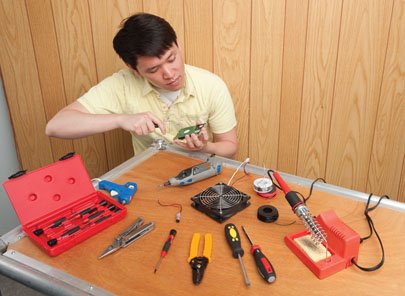
The projects we’ve included here range from relatively safe software tweaks to more challenging technical exercises. You’ll learn how to bend USB connections to your will and imbue home routers and digital cameras with robust new features. We’ve also taken some inspiration from projects we’ve seen online, including building a blue laser gun and making a digital picture frame you can mount on the wall of your office. These hacks will help you showcase your craftiness and give you a better understanding of how your electronics work. And the best part is that your old hardware will be faster, cooler, and more awesome afterward.
So, let’s get hacking!
Power Everything with USB
A simple first modification for budding do-it-yourselfers is to alter a non-USB gadget so that it can be run off of USB power from your computer. This mod is fairly easy to perform and is an important part of many more-complicated DIY projects, such as the USB charger on the next page. Here, we show you how to use USB to power a desk fan and book-light lamp.
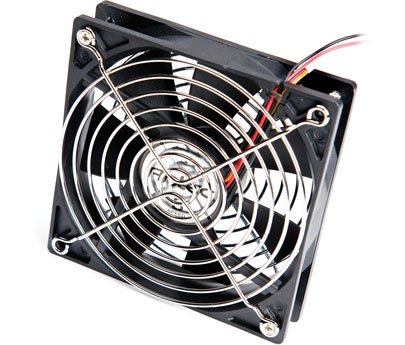
Case-Fan Desk-Fan
Our first project is to turn a case fan into one we can use on our desk to keep us cool as we work. All that’s needed is a 5-volt case fan (preferably with grill) and an unused USB cable.
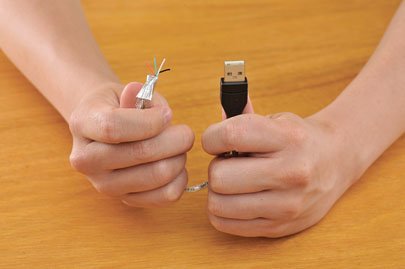
(image A)
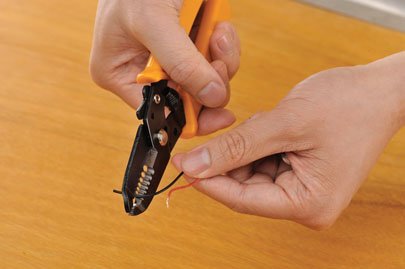
(image B)
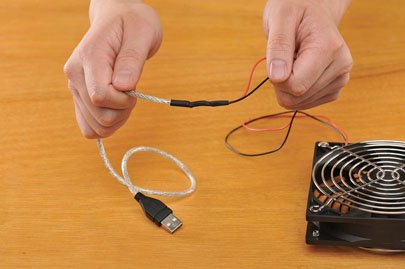
(image C)
The biggest gaming news, reviews and hardware deals
Keep up to date with the most important stories and the best deals, as picked by the PC Gamer team.
Book-Light Case-Light
Using very much the same procedure as above, you can convert an old battery-powered reading light into a USB-powered lamp to illuminate the back of your case. All you need to do is find an LED reading lamp that uses around 5 volts (the equivalent of about three AAA batteries) and open it up with a screwdriver. Under the battery compartment, you should find a red and black wire (image D).
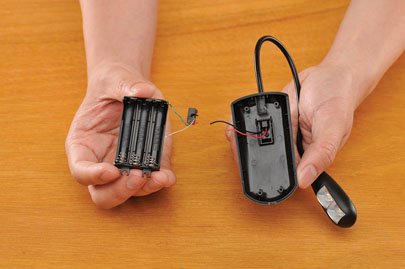
(image D)
Splice the two wires to the wires in a USB cable, just like with the fan, then put the battery cover back on the lamp, chipping out a hole big enough to feed the USB cable through. Slap a strip of poster tape on the bottom, plant it on the back of your case, and plug it in.

